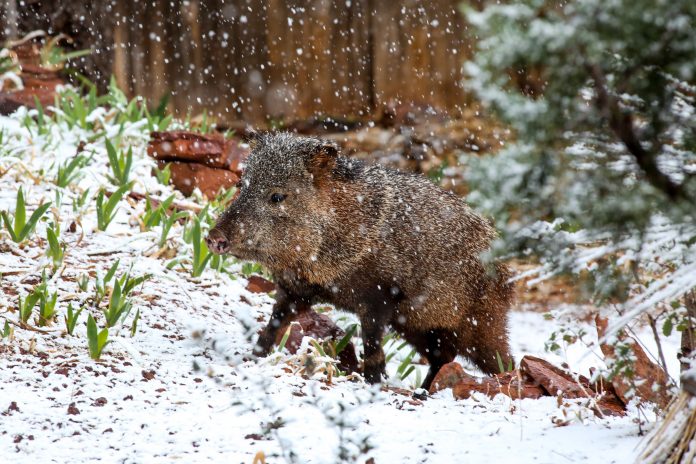Part of living in the Sedona and Oak Creek area is dwelling in nature itself. Surrounded by red rock vistas, neighborhoods were built into the sides of places like Airport Mesa and intertwine with the trail systems of Uptown and West Sedona.
Naturally, there are run-ins between the bipedal and quadripedal inhabitants. This series is going to offer some basic facts about the various types of wildlife found in the area.
Javelina are one of the most commonly seen large animals of the local ecosystem. Restaurants bear their name, and they have even been caught trying to get some exercise in at Sedona Red Rock High School’s John Ordean Memorial Stadium.
While oftentimes harmless, there have been more dangerous encounter. According to Lee Leudiger of the Arizona Game and Fish Department, two people were bitten while feeding javelina this spring.
The incidents triggered the lethal removal of large amounts of the herds in the area, Leudiger said.
Janie Agyagos, wildlife biologist with the U.S. Forest Service based out of the Red Rock Ranger Station, stressed that people under no circumstances feed or take in wildlife. Agyagos said javelina have been known to eat bird feed left out for birds, and as a result they come back for more, making them a nuisance animal.
“Please don’t feed wildlife,” Agyagos said. “Please leave wildlife alone, even though it looks abandoned.”
Javelina Facts
- There is a misconception they are a wild pig; they are part of the peccary family, originating from South America.
- Most commonly found in Central and Southern Arizona.
- Most active at night, but can be during daytime when it is cold.
- Travel in herds between two and 20 in number.
- Weigh approximately 40 to 60 pounds.
- Average life span is seven and a half years.
- They have poor eyesight, but a keen sense of smell.
- They eat primarily plants, including cacti, succulents, bulbs, tubers, beans and seeds, and sometimes insects and garbage.
- They are attracted by pet food, bird seed, fruit and other foods left out.
- They are known to seek shelter in shady areas around people’s homes.
- Use fencing to keep javelina out of garden and yard areas.
- To scare them away, make loud noises, throw small rocks in their direction or spray vinegar, water or a mixture of nine parts water and one part ammonia. Avoid shooting into their eyes. Do not use ammonia near wetlands because it is toxic to fish and amphibians.
- They are classified as big-game animals, and tags are given to hunt them during the months of October, January and February.
- It is unlawful to trap a javelina.
- In case a javelina is acting in an aggressive manner, contact AZGFD at its Flagstaff office at 774-5045. After business hours call (623) 236-7201.
Information courtesy of the AZGFD website.



